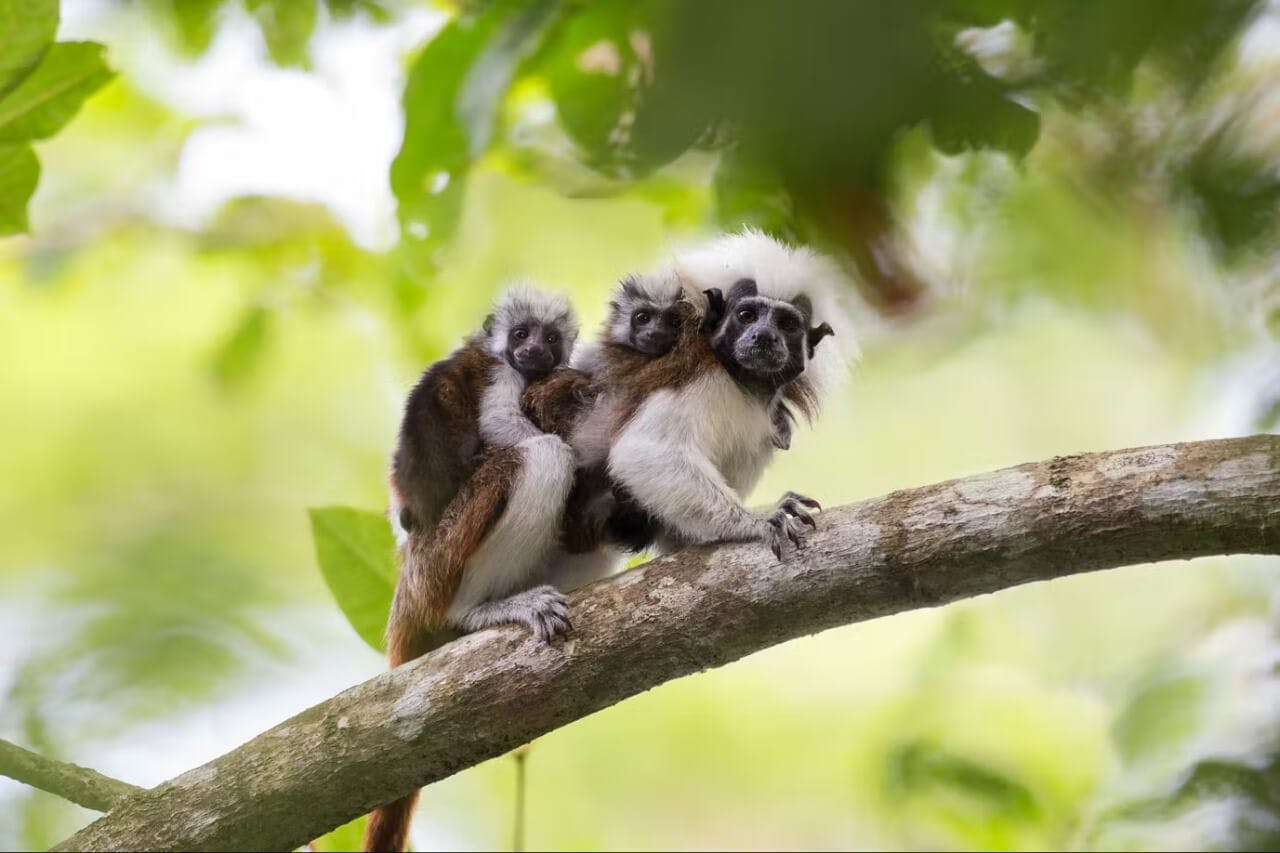Cotton-top tamarins (Saguinus oedipus) are one-pound monkeys, only found in the tropical forests of northwest Colombia, in South America; nowhere else in the world you will see these charismatic little primates in the wild. However, their survival is threatened by extensive deforestation and fragmentation of their habitat and by their capture for the illegal pet trade. Traditional cattle ranching and farming practices, as well as urban expansion, have reduced viable forest habitat to less than 8%.
Proyecto Tití (PT) is a non-profit organization focused on securing a long-term future for cotton-top tamarins (CTTs) and their forest home. Our program combines field research and forest conservation, with education and income generation alternatives, to reduce the unsustainable use and exploitation of forest resources for subsistence by local communities.
Given that habitat loss is the main threat to CTT survival, we have focused a lot of our efforts, over the past ten years, in protecting and restoring the forest they need to survive. In 2015, we purchased a 70-hectare property to create “Los Titíes de San Juan” (LTSJ) forest reserve, which neighbors the 1,000-hectare National Park Los Colorados (NPLC), one of the very few forest protected areas for CTTs in northern Colombia.
To date, thanks in part to the support of the Quick Response Fund for Nature (QRFN), LTSJ forest reserve has expanded to 439 hectares, that are now dedicated to the conservation of CTTs and native wildlife in this region. Due to its strategic location and configuration, LTSJ forest reserve has also helped increase connectivity between LCNP and other forest fragments in the area, and also to the network of forest corridors surrounding this National Park, which have been established in partnership with local organizations and environmental authorities through the signing of conservation agreements with local farmers to protect, restore and connect forest protected areas.
The most recent support received from the QRFN (2021-2022) helped us complete the funds needed to purchase a 135-hectare property (from the Herrera Family) to expand our reserve into 439 hectares and thus secure more land for wildlife conservation. The timely response, easy communication, and effective proposal presentation process made it very easy to work with the QRFN and to further fulfill our mission to protect CTTs in their forest home.
Now that the property’s title is under PT’s name, we will begin the registration process to become a legally private protected area under the environmental laws of Colombia, and to be included in our country’s national protected area system. The Herrera family had cattle ranching activities in at least 40% of their property. Our hope is to bring back the forest within these areas that were used as pastures, by implementing restoration strategies which we expect to put in place in 2023 and 2024.
Our forest restoration work is developed with participation of the local community. Our permanent staff of field assistants (12) are all hired from the local community, who help with patrolling the reserve, monitoring study groups of CTTs, managing the propagation of saplings from native trees in our nursery, planting those saplings in the target restoration areas and monitoring their growth and survival over time. We also hire 15-20 local farmers every year to help with the seasonal planting of saplings (April-May and August through November) in the target restoration areas. We have found this approach to be very effective in engaging the local communities in conservation and in providing tangible benefits to their families.




